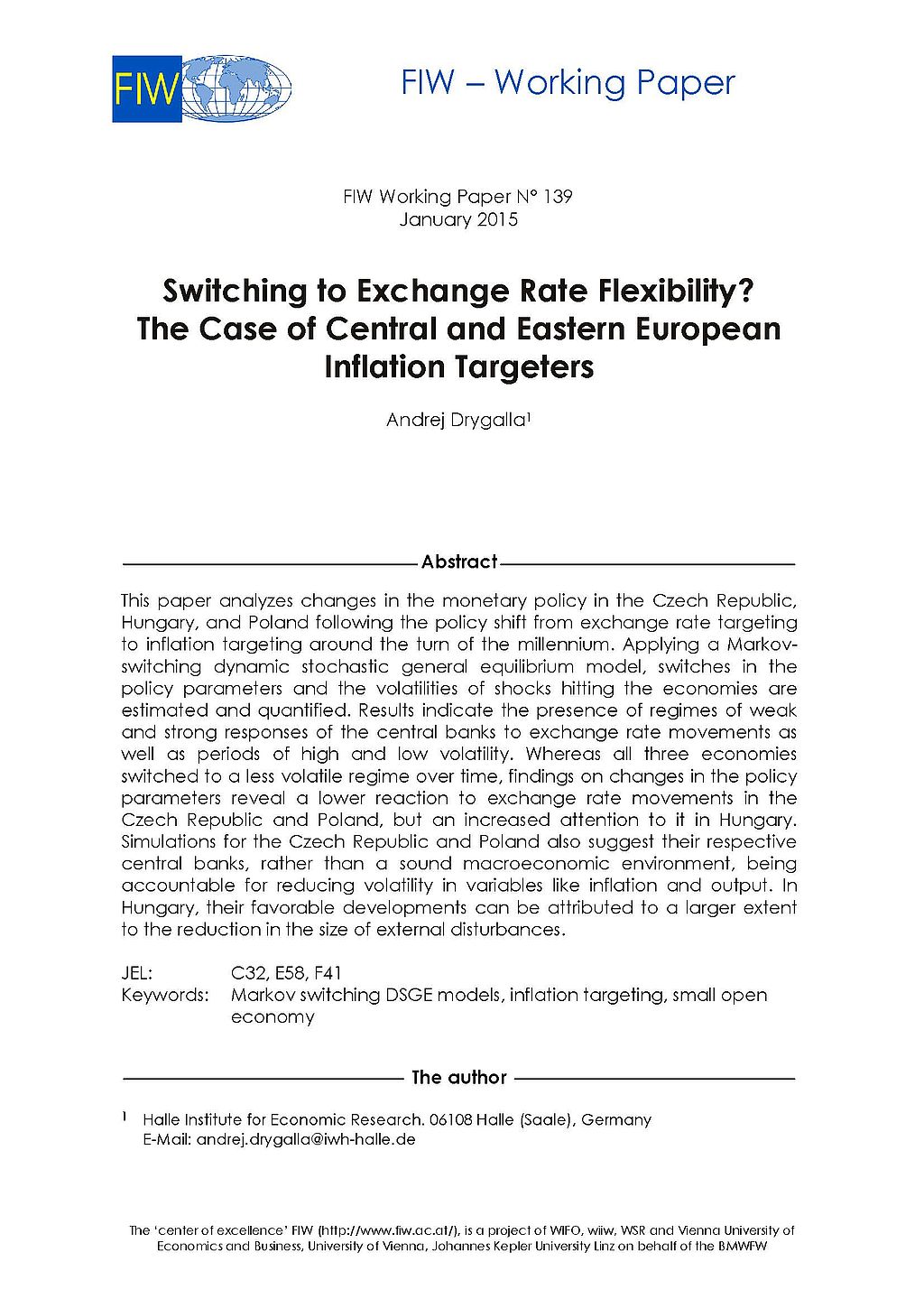
Switching to Exchange Rate Flexibility? The Case of Central and Eastern European Inflation Targeters
This paper analyzes changes in the monetary policy in the Czech Republic, Hungary, and Poland following the policy shift from exchange rate targeting to inflation targeting around the turn of the millennium. Applying a Markovswitching dynamic stochastic general equilibrium model, switches in the policy parameters and the volatilities of shocks hitting the economies are estimated and quantified. Results indicate the presence of regimes of weak and strong responses of the central banks to exchange rate movements as well as periods of high and low volatility. Whereas all three economies switched to a less volatile regime over time, findings on changes in the policy parameters reveal a lower reaction to exchange rate movements in the Czech Republic and Poland, but an increased attention to it in Hungary. Simulations for the Czech Republic and Poland also suggest their respective central banks, rather than a sound macroeconomic environment, being accountable for reducing volatility in variables like inflation and output. In Hungary, their favorable developments can be attributed to a larger extent to the reduction in the size of external disturbances.




